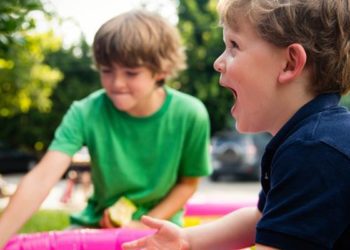Crowdsourcing picture based food ratings comparable to expert ratings
1. Health based apps help reduce burden of dietary self-monitoring.
2. Crowdsourced food ratings correlated well with independent expert ratings for both European and American foods.
Evidence Rating Level: 3 (Average)
Study Rundown: Mobile health technologies are quickly emerging as cheap, efficient, and effective methods for disseminating and monitoring health information. Numerous applications or “apps” are being developed for diseases ranging from obesity to diabetes and even cancer. Food related apps are especially popular since they allow users to self-monitor their diet and make appropriate life style modifications. In this study, the researchers assessed how closely crowd sourced food ratings matched ratings provided by experts. The study demonstrated a significant correlation between ratings obtained by crowd sourcing users of the Eatery mobile app and independent expert raters. This correlation was strong for photos of food and drinks from both USA and Europe.
Some strengths of this study include an excellent response rate from the expert reviewers in addition to a large sample size of pictures from both USA and Europe. The authors also trained the experts in familiarity with US Dietary Guidelines, ensuring good external validity of the results. Weaknesses of the study include a limited rating system that does not enable for a comprehensive evaluation of the food and lack of follow-up data to evaluate impact and long term adherence of this approach. This study helps establish crowd sourcing as a way to cheaply improve dietary adherence without compromising quality. It also demonstrates the impact of mobile based technology on reducing burden on individual patients and facilitating “in-the-moment” dietary management.
Click to read the study, published in the BMJ
Relevant Reading: Self-monitoring in weight loss
In-Depth [survey]: This study evaluated 450 pictures from the Eatery app between 2012 and 2013 and asked over 5000 peer evaluators and 3 expert evaluators to rate the food on a healthiness scale. On average, 18 peer evaluators ranked pictures of food taken via the app based on predetermined nutrient labels such as saturated fat content, fruits, vegetables etc. and on a fit to fat scale. Based on the ratings, each food was given a score and correlation between individual experts, experts and peers, and among peers determined. A Χ2 test demonstrated inter-expert correlation of 0.75, correlation of USA peer ratings with expert ratings of r=0.9 (p<0.001) and peer to expert correlation of European food with r=0.87 (p<0.001). Of note, the experts were graduate students of public health and received training on both US Dietary Guidelines and the use of the scoring system.
More from this author: Shift work linked to increased risk of diabetes, Risk of cerebral palsy linked to relatedness to cerebral palsy patient
Image: PD/CDC
©2012-2014 2minutemedicine.com. All rights reserved. No works may be reproduced without expressed written consent from 2minutemedicine.com. Disclaimer: We present factual information directly from peer reviewed medical journals. No post should be construed as medical advice and is not intended as such by the authors, editors, staff or by 2minutemedicine.com. PLEASE SEE A HEALTHCARE PROVIDER IN YOUR AREA IF YOU SEEK MEDICAL ADVICE OF ANY SORT.







